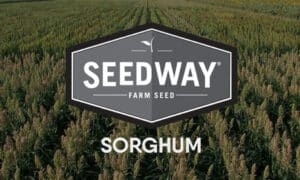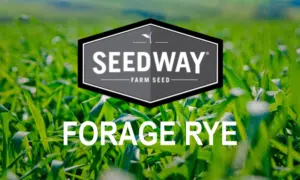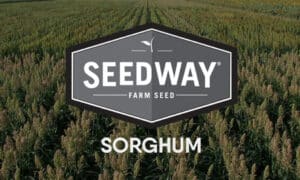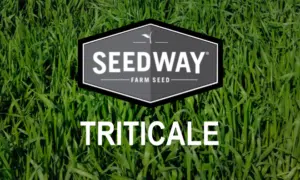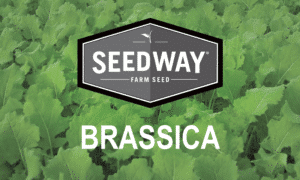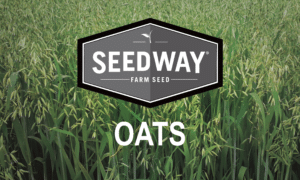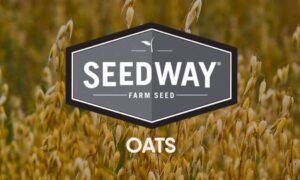Filter Products-
- Commercial(3)Organic and Untreated(1)
- Chicory(1)Cover Crops(20)Cover Crop Mixtures(16)Forage(101)Alfalfa(13)Brassicas(5)Bromegrass(3)Canarygrass(1)Clover(9)Berseem Clover(1)Ladino Clover(1)Red Clover(3)White Clover(3)Fescue(6)Festulolium(1)Forage Rye(1)Orchardgrass(7)Pasture Mixes(23)Ryegrass(8)Small Grain(2)Summer Annuals(16)Forage Sorghum(5)Grain Sorghum(4)Hybrid Sudan(2)Pearl Millet(2)Sorghum-Sudan(3)Timothy(6)Inoculants(3)Pollinator Mixtures(3)Seed Corn(95)Organic Seed Corn(9)Small Grains(22)Barley(3)Forage Oats(1)Oats(4)Triticale(5)Wheat(8)Soybeans(43)Conventional Soybeans(6)High Oleic Soybeans(2)
- Any TraitNo results found
-
Maturity
Medium(14)Early(5)Late(5)Medium-Late(5)Early-Medium(4) -
Maturity Days
-
Stalk Strength
-
G35-C40 (Grain Sorghum)
Learn more →G 35-B40 is a Medium-Early season Cream colored Grain Sorghum widely adaptable to dryland conditions. Excellent seed vigor and standability contribute to plant uniformity, giving G 35-C40 an impressive yield for its maturity. G 35-C40 is Aphix Elite Sorghum, providing tolerance to Sugarcane Aphids. Plant Height is Medium (40 to 46 inches) with a semi-compact head. G 35-C40 is not recommended for early planting in colder soils. G 35-C40 is available as a Safened Treated seed only. Planting must be after soil temperatures reach 60 degrees.
-
Grazemaster Winter Forage Rye
Learn more →Grazemaster is not a ryegrass, it is a leafier winter forage rye that has excellent cold tolerance.When compared to VNS rye it is higher in forage quality, containing higher protein and superior digestibility that is higher in energy.
-
GREENGRAZER (Hybrid Sorghum-Sudangrass)
Learn more →Small-seeded three-way cross with thin stems that are highly palatable. Very fast regrowth after cutting. Possesses the Green Top trait, which allows for further extension of the plant. Planting at higher populations will result in finer-stemmed forage. Finer stems will allow the forage to dry faster for higher-quality hay than is possible with thick-stemmed types. Seed at 35-50 lbs. per acre.
-
Hybrid Flex Triticale
Learn more →Dual planting window, spring/fall. Awnletted. Earlier maturity than FlexTM. Great for double cropping. Above average winterhardiness. Widely adapted throughout the US, spring planted in the North or Fall planted in the South and PNW.
-
HYOCTANE Winter Forage Triticale
Learn more →HyOctane is a winter triticale variety that has shown favorable forage yield and winter hardiness across the East Coast. HyOctane makes a great option for fall grazing on ensiling in the spring before corn planting. Reduced awned variety to aid livestock palatability. Good early-season vigor and earlier heading date than traditional varieties with a medium straw strength. Very short awns and a very high leaf to stem ratio with excellent yield and quality.
-
Jackpot Hybrid Brassica
Learn more →Jackpot forage turnip is a new low-growing variety bred for use in grazing operations and for cover cropping. The Jackpot bulb top doesn’t protrude from the ground as much as old varieties, allowing it to stay protected from animals as they graze. This allows for better regrowth and higher forage yields. In addition, Jackpot has excellent palatability, helping increase weight gains. Jackpot is also an ideal choice for cover crop use. Its bulb helps break up soil and protects against wind and rain erosion. Jackpot has multiple crowns on top that enable multiple grazings.
-
Juggernaut Winter Oat
Learn more →Medium-tall, Southern adapted variety that is great for forage, grain, cover crop, and wildlife food plot use. Excellent grain and forage yield potential. Exceptional resistance to crown rust, specifically a new race that is prevalent in the Southern U.S.
-
KARA Forage Oat
Learn more →Kara forage oat is a tall, leafy, forage style oat selected to replace SkiHi™ Forage oat. With excellent yield and improved resistance to leaf rust, it topped the 2018 Penn State Forage trials.
-
Maverick Winter Forage Triticale
Learn more →
Maverick is a new winter awnletted triticale release that was bred for forage yield and quality and reduced awns. It is a tall, leafy variety, but with good standability. It is a mid to late season variety, relative to other forage triticale’s, has good winter hardiness, excellent disease resistance, and has performed well in testing in the Northeast.
-
Palatine Soft Leaf Tall Fescue
Learn more →Palatine is a dense, soft, fine-leafed tall fescue with excellent forage quality. Palatine is free of toxic endophytes that cause animal health issues often associated with KY-31. The lack of toxic alkaloids, forage quality, and finer leaf makes it an ideal choice for grazing cattle, sheep and horses. Palatine’s forage quality also makes it an excellent choice. for grass-based dairy operations.
